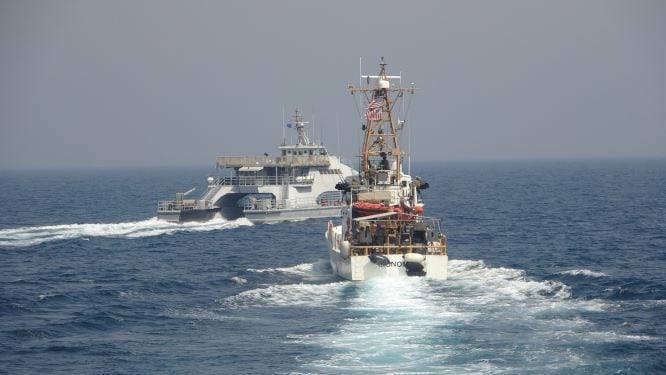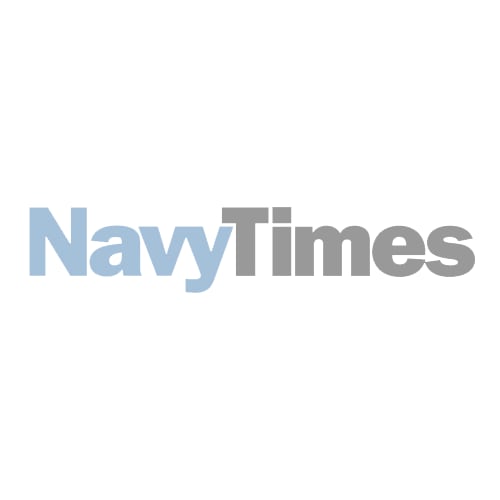Three vessels from Iran’s Islamic Revolutionary Guard Corps Navy approached patrol coastal ship Sirocco and expeditionary fast transport ship USNS Choctaw County in an unsafe manner while transiting the Strait of Hormuz Monday, according to the U.S. Navy.
The Sirocco issued an audible warning to prevent a collision as one of the vessels drove directly toward the ship at a “dangerously high speed,” the Navy said. The Sirocco also released a warning flare when the Iranian vessel came within 50 yards of the ship.
“The full interaction among all vessels lasted one hour and ended when the IRGCN craft departed the area,” the Navy said in a statement. “U.S. Navy ships continued their transit without further incident. The IRGCN’s actions did not meet international standards of professional or safe maritime behavior, increasing the risk of miscalculation and collision.”
RELATED

This isn’t the only recent unsafe incident with Iranian vessels.
On March 4, three Revolutionary Guard ships had a tense, two-hour encounter with Navy and U.S. Coast Guard vessels as they traveled out of the Persian Gulf through the strait, the Navy said. In that incident, Iran’s catamaran Shahid Nazeri came within 25 yards of the USCGC Robert Goldman, the Navy said.
“The two U.S. Coast Guard cutters issued multiple warnings via bridge-to-bridge radio and deployed warning flares,” the Navy said.
The Navy did not elaborate on why it did not announce the previous incident, particularly since a larger vessel came even closer to an American warship.
The incident on Monday involving the Revolutionary Guard and the Navy comes as tensions remain high due to stalled negotiations over Iran’s tattered nuclear deal with world powers and as Tehran enriches uranium — coming ever closer to nuclear weapons-grade levels — under decreasing international oversight.
Meanwhile, the United Nations’ nuclear watchdog said Iran now plans to enrich uranium through a second set of advanced centrifuges at its underground Fordo facility amid the standoff.
Iran and world powers agreed in 2015 to the nuclear deal, which saw Tehran drastically limit its enrichment of uranium in exchange for the lifting of economic sanctions. In 2018, then-President Donald Trump unilaterally withdrew America from the accord, which he and his advisers viewed as bad for the United States and its regional partners, particularly Israel. But the move raised tensions across the wider Middle East and sparked a series of attacks and incidents.
Talks in Vienna about reviving the deal have been on a pause since March. Since the deal’s collapse, Iran has been running advanced centrifuges and rapidly growing stockpile of enriched uranium. Earlier this month, Iran also removed 27 surveillance cameras of the U.N.’s International Atomic Energy Agency. The agency’s head warned it could deal a “fatal blow” to the nuclear deal.
The Associated Press contributed to this report.
